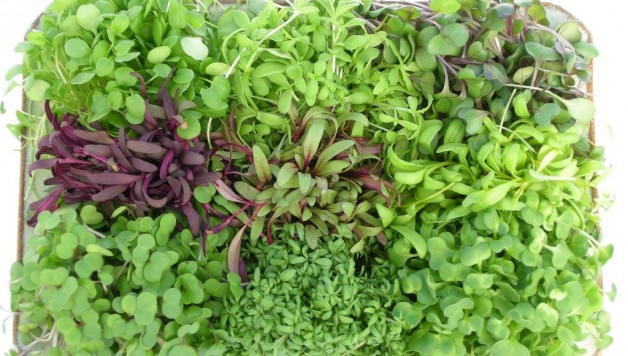Microgreens are all the rage on the urban agriculture scene for the many health and environmental benefits they provide. Microgreens are simply tiny forms of certain varieties of herbs, sprouts, and leafy vegetables. They can be grown in a controlled environment hydroponically. They’re a great option for urban gardening in small spaces, office buildings, and even on-site for restaurants.
Health Benefits of Micro Greens
Incorporating more raw food into your diet can provide you with tremendous health benefits. This is why microgreens have become so popular. In fact, microgreens are said to contain a higher concentration of nutrients and vitamins such as Vitamin D, calcium, and iron as compared to mature plants. In some varieties, microgreens may contain up to 40% more nutritional value. Because you can grow microgreens hydroponically indoors, you eliminate or reduce the need for harmful chemicals and pesticides as your produce is being grown in a controlled environment.
Varieties of Micro Greens
Hydroponically grown microgreens can be grown year-round indoors. The following the most common varieties of microgreens enjoyed by many:
- Arugala
- Kale
- Radish
- Sorrel
- Cilantro (better grown in soil)
- Sunflower Seed Greens (better grown in soil)
- Peas
- Basil
- Purple cabbage
- Chard
- Broccoli
- Beet (better grown in soil)
A vertical hydroponic microgreen living wall. Image via Harvest To Home.
Trouble Shooting Your Microgreens
You can grow your own microgreens using an easy Microgreens Growing Kit. Here are some microgreen care tips for healthy harvests:
Re-Cutting — Microgreens do not re-grow. Use new grow pads.
Multiple Micro Greens in One Tray — Sow multiple crops in the same tray. Choose micro greens that need to be harvested at similar times.
Presoaking — Some seeds will do better if pre-soaked. Presoak in cold water.
Planting Too Thick — Pluck individual plants if they are coming into thick to avoid rot.
Planting Too Thin — This won’t cause any trouble to your crop but will not provide you with a healthy harvest.
Temperature —A warm spot and lots of light will speed up the growth of your micro greens. Light is more important than temperature.
Generally Weak Crop —Microgreens should struggle a bit to survive. They should be kept in the dark long enough for optimal results.
Pale Crop — Your light may not be strong enough. Try using LED grow lights.
Dry Crops — If you notice dry spots or looks like it has burn patches, the crop might be getting too much light. Some crops are more sensitive to light and can get burned. To solve this issue, increase the distance of your grow lights from your plants, decease the wattage of your light, or decrease the amount of time your crop is exposed to light in a day.
Underwatering —Signs of wilting. The grow pad or medium should be slightly soggy.
Overwatering — Microgreens thrive with the right mix of water and oxygen. Without enough oxygen the crops are susceptible to root diseases, and can even result in the loss of the tray. Avoid any puddles that that are above the root line.
Rot — Though overwatering can cause rot, the cause is usually an indication that your water is too alkaline (pH higher than 6.5). Make sure you pH balance your water or you will have weak crops. You can use lemon juice to adjust your pH level.
Odor — Around the 10 day mark, your crop may experience odor. This is a good time to harvest or just prior to 10 days.
Hydroponically grown microgreens in clay pebbles growing media. Image via Freestyle Farm.
Growing Conditions of Micro Greens
Though indoor gardening and hydroponic growing is in a controlled environment, it’s important to be aware that there are still growing variables. If you are growing large amounts and in small spaces remember to take into consideration ventilation, heat, and moisture.
Whether you grow your own microgreens as a recreational gardener for fun and health, or as a business for the top chefs and restaurants, producing your own pesticide free produce can be rewarding. Top chefs use microgreen varieties to create a spectacular display of edible art and freshness. If you enjoy growing your own and are concerned with where your food is coming from then you might want to give growing your own microgreens. You’ll improve your health as well as the environment and be part of the important concept of local eating and growing your own food. Heck if the kids can do it why can’t you?
Feature Image: A variety of microgreens. Image via Todd’s Seeds.
